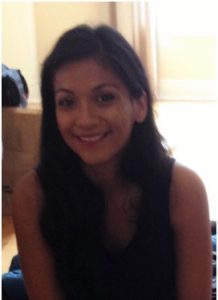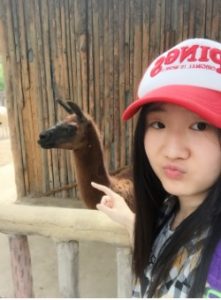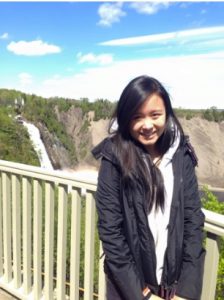THE TEAM

Lidwina Christanya Amanda Sari
3rd year, Nutritional Science
I have profound interest in the relationship between human psychological state with their tendency to make better food choices. I am very excited to do map trialling and meet different community members and study how the two variables might correlate with each other based on their household experiences.

Yin Lam (Belva) Wong
3rd Year, Food, Nutrition and Health
What can I do as a food lover? Being an international student with a duty to reduce money spent as money is a huge pressure for my family. At the same time, I love food and want to have a cheap but balanced diet. Therefore, this project is one of the best learning experience that I could gain in order to further discuss and research upon this issue.

Iris Lopez Ramirez
3rd year, Food, Nutrition and Health
I love food and appreciate the intricacy of people’s relationship with it; be it social, cultural, or personal. I enjoy giving back to my community through volunteering, specially in community kitchens that help those with food insecurities. I am excited to participate in the food mapping initiative as this is a great way to help our community.

Lisa Zheng
4th year, Food, Nutrition and Health
Breathing and eating multiple times a day are activities many of us do daily. However, even in a large developed area like Vancouver where grocery stores, restaurants, fast food chains are readily accessible, there are still people that don’t have access to a stable food source. I am excited to participate in this community project as I can help make a difference and spread awareness about the available food assets around the community.

Mitchie Zhao
3rd year, Food Science
I am passionate about food microbiology, especially the modification of microorganisms in food industry. Vancouver Asset Map project provides me an opportunity to think about food safety and food security from a social perspective instead of just learning from textbooks and labs.

Queena Chung
3rd year, Nutritional Science
As an avid eater and sleeper, I am quite the couch potato. Nevertheless, I enjoy the adrenaline that comes with extreme sports, as well as travelling and exploring different cultures. I am particularly interested in human nutrition on the international scale and also from a social aspect.
VISION, MISSION, GOALS
We, as a team, realized that achieving food security is not an easy job. One can eat three meals a day and be very full but still be food insecure due to the lack of nutritional quality of the food. This is the main reason why we chose the project, as food asset maps can be a very important community asset in addressing food insecurity. Through building food asset maps, we are hoping to make food resources more accessible to both the vulnerable and non-vulnerable individuals living in different parts of the community. With a more expansive reach, we believe that this project has the potential to create a greater ripple effect and reach out to a greater, more diverse public.
Our mission includes improving the asset map so that it can be presented to the target users in a detailed yet easy-to-navigate manner. Assets are all around us in the Vancouver area. Unfortunately, not all of these assets are used to their full potential as the targeted population do not know of their existence. We believe that if everyone is able to access the needed resources efficiently, the amount of struggle associated with food insecurity and the potential wasting of a valuable resource tool would be dramatically reduced.
We hope that the knowledge gained from LFS 350 will help us transition into more mindful community members. By the end of the course, we wish to develop skills in setting SMART goals that match what our community partners want. Moreover, we aspire to further develop our communication skills in order to continue making good community partnerships in the future. We expect to integrate what we learn from the community to a bigger picture of food systems. Ultimately, we want to become more active community members and become more aware of issues in food insecurity.
PROJECT OBJECTIVES
The Vancouver Food Asset Map is a collaboration project between Vancouver Coastal Health Public Dietitians with different community partners to provide a mapping tool for community members and agencies in locating different foot assets, especially one that is current and easily accessible. By supporting food access and aid in dealing with food insecurities, this project will hopefully support the different layers of the community (Teya & Kathy, 2016). As a team, we will be working closely with Vancouver Coastal Health under the supervision of Teya Stephens, R.D., to collect data of free or subsidized grocery food assets across Vancouver (Teya & Kathy, 2016). Another portion of this project will be contributed to help people from the community who are unfamiliar with the map to know the map and give them instruction of how to use the map (Teya, 2016). Furthermore, in this project we are going to gather feedback from the community members on the usability of the map, so they can continuously improve the map and close gaps in the food asset map, making it more comprehensive, up to date and user-friendly(Teya & Kathy, 2016).
FIRST IMPRESSIONS: PROCESS TO DATE
Putting the first impressions into consideration, we believe that the most important principle is to respect the local people. As Ernesto Sirolli(2012) said in the video, “Want to Help Someone? Shut up and Listen.” This demonstrates that if we want to do community projects and help local people, we should first listen and get to know them rather than simply imposing our ideas onto them. We make an effort form connections with community members because local people, instead of external experts, are the center of the community development, and each person contributes to the community (referring to the principles of Asset-Based Community Development(Mathie & Cunningham,2003).Therefore, the acknowledgement of social, historical background, and population composition of the community chosen for the food asset map is significant for us to analyze food justice(Allen, 2008). Most importantly, always be aware of the cultural and educational backgrounds of community members when we try to communicate with them, especially when we try to help build community support for those who have trouble with getting food.
References:
Allen, P. (2008). Mining for justice in the food system: perceptions, practices, and possibilities. Agriculture and Human Values, 25(2), 157–161.
Ernesto Sirolli (2012, November 26) Want to help someone? Shut up and listen! Retrived from https://youtu.be/chXsLtHqfdM
LFS 350- Vancouver Food Asset Map [ Powerpoint] Evergreen Community Health Centre; Teya,S.,& Kathy,R,. (2016, September 21).
Mathie, A., & Cunningham, G. (2003). From clients to citizens: Asset-based Community Development as a strategy for community-driven development. Development in Practice, 13(5), 474–486.
Vancouver Food Asset Map Draft LFS 350- Trainer Guide.[Word] Vancouver Coastal health and Public Health Program; Teya,S. (2016, September).